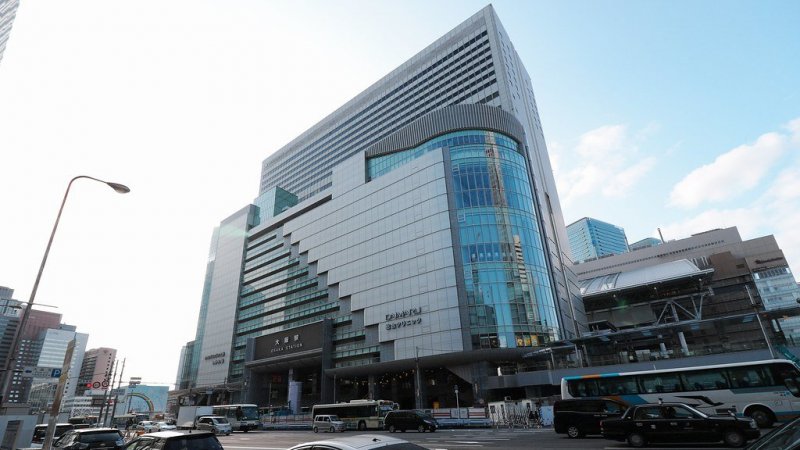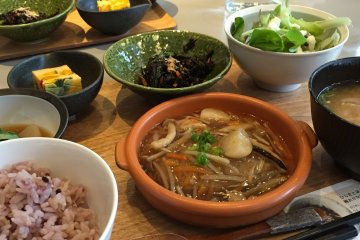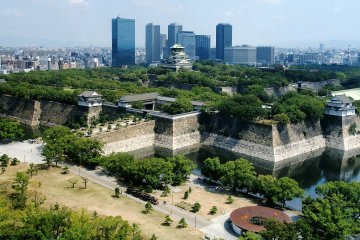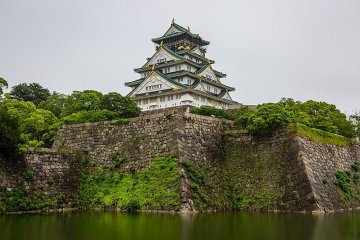
Станция Осака
Takane ShojiСтанция Осака определённо является одной из крупнейших и наиболее занятых железнодорожных станций в Японии, с поддержкой многочисленных переплетающихся железнодорожных путей.

Osaka Station is a major station in the Umeda district of Osaka. It is served by a large number of local and interregional trains, but not by the Shinkansen that stop at Shin-Osaka Station. The formerly dark and cramped station has undergone extensive renovations and Reborn in 2011 as Osaka Station City, one of the most attractive train stations in Japan.
Osaka Station City is one of Osaka's busiest, top quality shopping areas with big brand names and an array of stylish and trendy restaurants and bars. An architectural and interior design wonderland, Osaka Station City is just one example of the architecture Osaka is so famous for. The landmark of Osaka Station City is a large glass roof that spans the train tracks and gives the station a lot of new space.

Станция Осака определённо является одной из крупнейших и наиболее занятых железнодорожных станций в Японии, с поддержкой многочисленных переплетающихся железнодорожных путей.

Самым привлекательным в отеле Сити Плаза Осака (City Plaza Osaka) является спа, расположенная в стеклянной надстройке здания. В спа имеются горячие ванны, а рядом с помещением спа размещены зона отдыха и рестораны.

Hotel MyStays Otemae в Осаке - замечательный выбор для остановки в Осаке. Отличное расположение, прекрасный сервис

Если Вам хочется отведать индийской, малайзийской или индонезийской кухни, купите специи в магазине Osaka Spice & Halal Food и приготовьте её сами!

Япония славится своей здоровой пищей, но вегетарианцам или приверженцам органического питания бывает непросто подыскать подходящий ресторан. Вот несколько популярных в Осаке ресторанов, где подают то, что вам нужно.

Коктейли, морепродукты, веселье и празднования в баре Бо в Осаке.

The Umeda Sky Building in Osaka is the city's best-known landmark and was built in 1993. It is located in the Kita district of Osaka, near Osaka and Umeda train stations. The building, designed by the famous architect Hiroshi Hara, consists of two 40-story towers, which are connected on the top two floors ("Floating Garden Observatory"). You can go up on an escalator through a glass tube and enjoy a breathtaking view there, both by day and by night. The basement has a restaurant floor recreating an early Showa period town, while offices occupy most of the other floors.

Osaka Castle Park is a public urban park and a historic site in the prefecture of the same name. It is the second largest park in the city and, in combination with Osaka Castle, is a popular photo opportunity. The castle park is located in the south of Ōkawa and occupies a large area in the center of the city of Osaka, a total of about two square kilometers. In addition to extensive green areas and sports facilities, it also includes a multi-purpose arena (Osakajo Hall) and a shrine dedicated to Toyotomi Hideyoshi, a Japanese commander and politician who made a decisive contribution to the unification of modern Japan. He built Osaka Castle in 1583 in order to rule over Japan from there. In early April, Osaka Castle Park is one of the most popular places to see the cherry blossom.

Osaka Castle is one of the city’s most iconic sites and draws numerous visitors to its spacious park and imposing keep every year. Osaka Castle was first built by warlord Toyotomi Hideyoshi in 1583. From this stronghold, Hideyoshi put down rebellions and worked to unite the provinces of Japan. After his death, his former vassal Tokugawa Ieyasu took control of the country himself and established the longest running military rule in history. To quell any attempts of challenge from Hideyoshi’s former supporters, Ieyasu torched Osaka Castle in 1615, leaving it in cinders. The keep was later reconstructed by the Tokugawa clan, though fires and bombing raids have destroyed it several times. Today’s main tower dates from 1931 and has been recognized as an Important Cultural Property. A recent renovation from 1995-1997 added an elevator and made the keep completely accessible to disabled visitors. The interior of the castle houses a history museum that details the life of Toyotomi Hideyoshi and the power struggles of the late 16th century. Approximately 10,000 items – including weaponry, armor, folding screens and personal letters – are displayed on a rotating basis. A movie theater offers a selection of five short films on the famed warlord; though the audio is in Japanese only, subtitles in multiple languages are provided. The top floor of Osaka Castle doubles as an observation desk, offering visitors a bird’s-eye view of the surrounding park and the golden shachiko (figures that resemble a cross between a fish and a tiger) that adorn the roof. Those looking for a unique photo memory of their time in Japan may want to rent a samurai outfit, complete with headgear, from the castle’s costume corner. For a small fee, visitors can feel like they’re a part of feudal Japan. In springtime, the grounds of Osaka Castle become the perfect picnic spot for sakura fans, as hundreds of cherry blossom trees shower the site with pale pink petals. Visitors can even take a boat ride on the castle moat, for a close-up glimpse of the imposing, stone fortifications. Osaka Castle is easily accessible from a variety of metro stations that surround the grounds. There is an admission fee (¥600) to visit the main keep and the Ninomaru Garden (¥200).